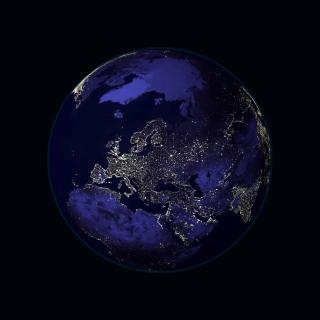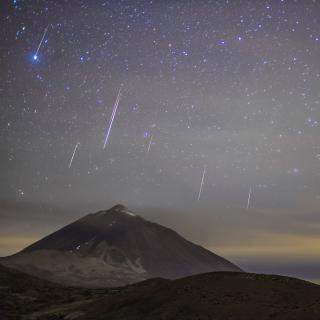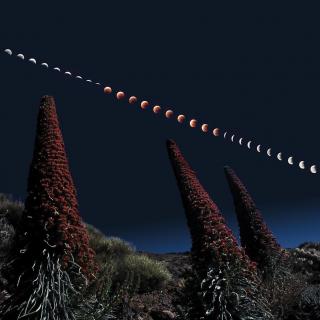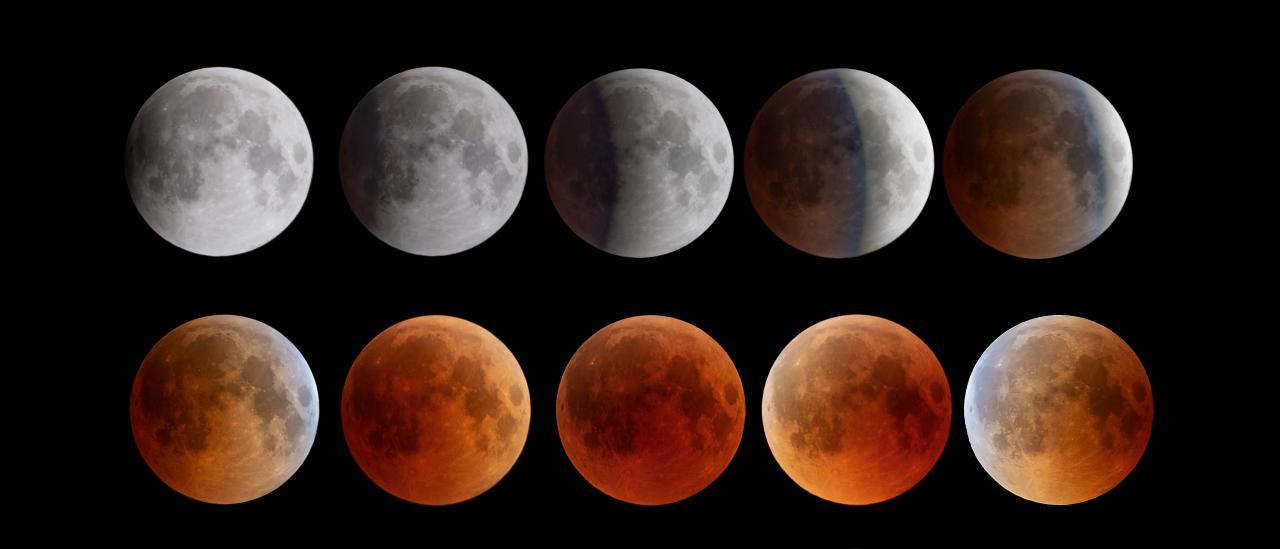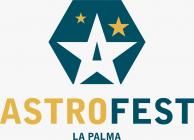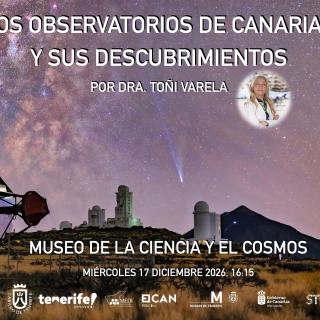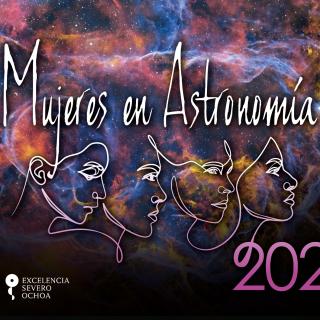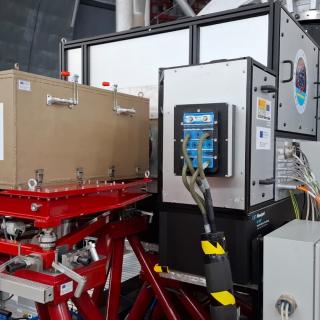Sequence of the total lunar eclipse of 2018. HDR (High Dynamic Range) composition. Top row, entry into the Earth's umbra; second row, during totality; bottom row, exit from the umbra. The bluish colour of the edge of the Earth's shadow in the partial phases stands out. Credit: Juan Carlos Casado (starryearth). Full-size image: https://flic.kr/p/LST1x6
Three years after the previous broadcast of a lunar eclipse, in the early morning of Sunday 15th to Monday 16th of May the Sky-live.tv channel will give live coverage of this awaited astronomical event from the Canary Observatories.
On Monday 16th May, starting at 02:27 UT the Moon will again enter the shadow of the Earth, and will take on the coppery glow which is so characteristic of lunar eclipses. This event will be visible from the Canaries starting at 03:27 a.m. local Canary time, and in the Peninsula, where dawn will arrive with the Moon eclipsed, from 04:27h. From that time, the moon will continue its transit until it emerges from the shadow of our planet.
Lunar eclipses occur when our satellite passes through the shadow of the Earth. This does not occur every month because the orbit of the Moon is inclined in relation to the Earth's orbit round the Sun, the plane which we know as the "plane of the ecliptic". As opposed to solar eclipses, lunar eclipses are visible from any place on Earth where the Moon is above the horizon.
According to data supplied by NASA (see the report) the phase of totality will last nearly 85 minutes (1 hr 24 min 53 sec) starting at 02:27 UT (Universal Time), 1 hour more in the Canaries, and 2 hours more in the Peninsula and the Balearics during daylight savings time), and will finally emerge at 05:55 UT. This means that the eclipse as a whole will start at 02.27 UT, and the whole eclipse will be visible from all the American continent, and from Western and Central europe.
Live from the Teide Observatory
Within the outreach activities of the European project interreg EELabs (eelabs.eu) and with the collaboration of the tourism section of the Cabildo Insular of La Palma, and the Society for the Promotion and Development of the Island of La Palma (SODEPAL) through the programe of the Promotion of AstroTourism, the sky-live.tv channel will broadcast live the projection of the shadow of Mount Teide while the Sun is setting, and moonrise from the Tenerife observatory. This connection will take place on the evening of Sunday 15th at 19:15 UT (20.15 Canary time, 21:15 in the Peninsula). The cameras will continue to broadcast and, from 02:15 UT (03:15 Canary time, 04:15 in the Peninsula) we will follow the totality phase, with explanations by Miquel Serra-Ricart, astronomer at the IAC, via https://www.sky-live.tv
"If we think that, from Europe, we will need to wait until March 2025 to see another total eclipse of the Moon, it will be worth getting up early so as not to miss the dark red Moon next Monday", comments Miquel Serra-Ricart, astronomer at the IAC.
EELabs (eelabs.eu) is a project funded by the program INTERREG V-A MAC 2014-2020, co-financed by FEDER (European Fund for Regional Development) of the European Union, under contract MAC2/4.6d/238. 5 centres in Maraconesia (IAC, ITER, ULPGC, SPEA-Azores, SPEA-Madeira) work in EELabs. The objective of EELabs is to create Laboratories to measure the energy efficiency of the artificial night-time lighting in natural protected areas of Maraconesia (the Canaries, Maderia, and Azores).
Three supercomputing centres: The el Centro Extremeño de Tecnologías Avanzadas (CETA-CIEMAT), the Consorci de Serveis Universitaris de Catalunya (CSUC) and the Instituto de Astrofísica de Canarias (IAC) are collaborating in the distribution of the broadcast on the web portal (sky-live.tv).
Audiovisual material
- Moon eclipses: https://flic.kr/s/aHsjW1kSeD
- Moon eclipse 2019: https://flic.kr/s/aHskMyRe7n
- Moon eclipse 2018: https://flic.kr/s/aHsmrdJ3Fu
